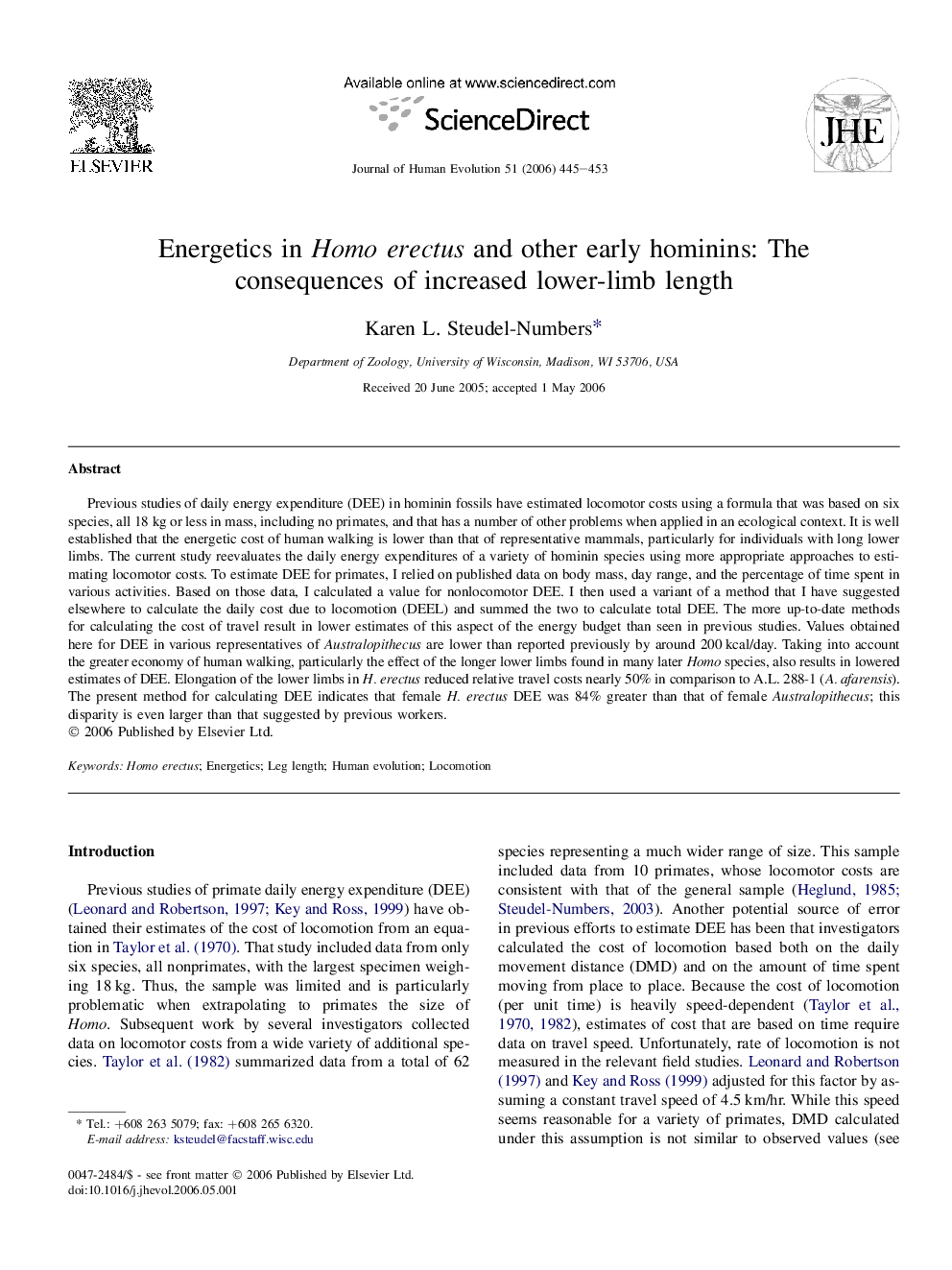| کد مقاله | کد نشریه | سال انتشار | مقاله انگلیسی | نسخه تمام متن |
|---|---|---|---|---|
| 4556970 | 1329516 | 2006 | 9 صفحه PDF | دانلود رایگان |

Previous studies of daily energy expenditure (DEE) in hominin fossils have estimated locomotor costs using a formula that was based on six species, all 18 kg or less in mass, including no primates, and that has a number of other problems when applied in an ecological context. It is well established that the energetic cost of human walking is lower than that of representative mammals, particularly for individuals with long lower limbs. The current study reevaluates the daily energy expenditures of a variety of hominin species using more appropriate approaches to estimating locomotor costs. To estimate DEE for primates, I relied on published data on body mass, day range, and the percentage of time spent in various activities. Based on those data, I calculated a value for nonlocomotor DEE. I then used a variant of a method that I have suggested elsewhere to calculate the daily cost due to locomotion (DEEL) and summed the two to calculate total DEE. The more up-to-date methods for calculating the cost of travel result in lower estimates of this aspect of the energy budget than seen in previous studies. Values obtained here for DEE in various representatives of Australopithecus are lower than reported previously by around 200 kcal/day. Taking into account the greater economy of human walking, particularly the effect of the longer lower limbs found in many later Homo species, also results in lowered estimates of DEE. Elongation of the lower limbs in H. erectus reduced relative travel costs nearly 50% in comparison to A.L. 288-1 (A. afarensis). The present method for calculating DEE indicates that female H. erectus DEE was 84% greater than that of female Australopithecus; this disparity is even larger than that suggested by previous workers.
Journal: Journal of Human Evolution - Volume 51, Issue 5, November 2006, Pages 445–453